he Top 20 Food Rules You NEED to Know to be Truly Lean & Healthy
Everything
you wanted to know about protein, carbs, calories, probiotics, vitamin
D, cooking oils, foods that burn fat, foods that make you fat, foods
that can kill you slowly, and much more.
 by Mike Geary, Certified Personal Trainer, Certified Nutrition Specialist
by Mike Geary, Certified Personal Trainer, Certified Nutrition Specialist
Author of best selling program: The Truth About Six Pack Abs
This article is one that you're going to want to bookmark to come
back and reference at any time. And you'll also want to share this page
with all your friends and family to help spread what true healthy
nutrition is all about. Seriously, there's more great information about
nutrition on this page than a lot of entire books.
I'm going to rattle off a bunch of random important facts (in no
particular order) about food and eating healthy that you need to know.
I'll also refer to any of my previously published articles where
appropriate, and where a more full explanation might be needed if you
want more details on that topic. All references to other articles will
open in a new window so that you can stay on this page when you're done
any of the other reference articles.
Before we start this list, let's establish a big picture view first,
before we dive into various smaller topics like specific foods...
The Big Picture View (most people have never thought of food in this way)
Let me give you something to think about, and this is VERY big
picture and VERY important... if we took away modern society and plopped
you on a deserted island, what is the #1 most important thing in your
life at that point? That's right... FOOD! What will I eat to survive
and thrive. At that point, you can forget about careers, technology,
video games, television, nightlife, cell phones, and just about every
other aspect of modern life... the single most important thing you need
to focus on at that point is what to eat.
However, in our modern day, most of us don't have to think about what
to eat at all, and in fact, most people NEVER think about what they put
in their mouths... they just eat whatever they see in front of them
that they know tastes good, without any thought about whether it's an
appropriate food for humans to eat.
You can call that the
"See-Food Diet"... you "see" the food and you eat it.
Isn't that a major disconnect? Food is quite literally one of the
most important things in our daily lives, yet barely anybody thinks
about the ramifications of what they eat and how it will affect their
health and the quality of their life (until, of course, they lose their
health).
Since food is one of the most important things in our lives for our
quality of life, don't you think that it should be a priority as one of
the fundamental topics that children learn about throughout school? It
should be a priority, but it isn't. Kids get a thorough education on
topics such as Math, History, Science, Languages, etc, but never get
more than a couple hours in their entire 12 years in school about the
most important thing in our lives...what to eat.
If you think about it, that's absolutely insane... One of THE single
most important aspects of our lives is never really taught to children
in school. And parents don't generally pick up the slack and teach kids
nutrition because they were never taught about it either. This is a
modern day phenomenon because the abundance of food all around us in
modern day life means that we don't have to think about what's
appropriate to eat.
If you want to be lean and truly healthy, obviously you NEED to think
differently than the average person who eats the "SEE-food diet" where
they eat without thinking.
There needs to be some simple rules to follow if you want to
successfully navigate the current food landscape out there where so many
foods are making you fat and sick.
And THAT's why I wrote this page for you... to simplify and give you
some simple food rules to be lean and healthy, yet still ENJOY food.
Food Rules Simplified
Okay, so let's simplify nutrition a bit here... everyone out there
seems confused about what is the best "diet" to be on. People seem to
love to always jump from fad diet to fad diet such as low-fat diets,
atkins diets, south beach diets, grapefruit diets, detox diets,
vegetarian diets, and other sometimes ridiculous diets that most times
are based on one person's opinion or marketing scheme (or personal
agenda) rather than based on actual science.
The only "diet" that's actually based on real science is the study of
paleolithic nutrition (aka - paleo diet). But I hate to call it "paleo
diet", because it's not like any other fad diet, since it's based on
real archaeological nutritional science about what our ancestors ate
before the agricultural revolution came around. The idea is simply that
for the first 99.5% of our existence (ancestors back as far as 2
Million years ago, homo erectus), we only ate wild plants and animals,
while for the last 0.5% of our existence (since the agricultural
revolution in the last 5,000-10,000 years), humans now almost entirely
eat farmed plants and animals. The biggest change this represents is
the massive inclusion of grains in our current diet (and what our
animals are fed) now compared to our Paleolithic ancestors.
Many people think that we don't know exactly what ancient humans ate... but this is false.
Nutritional archaeologists know pretty convincingly what ancient
humans ate as they study a lot of evidence such as ancient feces remains
as well as studying isotope ratios in human bone samples from all over
the world through every time period in history to determine ratios of
animals vs plants that ancient humans ate --which by the way, was always
an omnivorous mixture of plants and animals, and a fairly high protein
intake...there was no such thing as ancient paleolithic
vegetarians...any Nutritional Archaelogist can confirm that they simply
didn't exist. We were all omnivores that ate different ratios of plants
and animals based on what part of the world, what latitude we lived,
and the time of the year.
So what exactly did our Paleolithic ancestors eat for the first 99.5%
of our existence, representing what we are still programmed to eat?
Simple:
- Wild meat, fish, and seafood (animals that ate the right foods, unlike our current farmed meats and farmed fish)
- fruits
- veggies
- eggs
- nuts
- seeds
Grains were only a very TINY fraction of the ancient Paleolithic diet
as there was no way to process large amounts of grain back in that day
into flour, so amounts of wild grain would have been small such as a few
grains in an occasional soup or stew. As you can see, this is vastly
different from the modern human diet that includes grain at almost every
meal and in very large quantities in cereals, breads, pasta, muffins,
bagels, etc.
So with that big picture explained...let's get into the details of my top 20 food rules:
Food Rule #1.
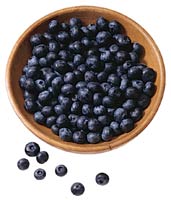
Carbohydrates
don't need to be eliminated... they are not inherently "bad" in
reasonable quantities. But grains and processed sugars in particular
should be minimized. So to make things simple, you will be leaner and
healthier if you get most of your carbohydrates from
fruits and vegetables instead of grains and processed sugar.
The biggest problem with
grains (breads, cereals,
pasta, bagels, etc), aside from the abuse to your blood sugar regulation
system (pancreas and insulin sensitivity), is that grains typically
contain a lot of anti-nutrients which prevent your body from absorbing
some minerals, as well as gluten and other substances that cause chronic
gut inflammation and even possibly digestive system damage in some
cases of severe gluten intolerance.
Please note that
potatoes, sweet potatoes, and other
tubers have less problems in terms of digestive system inflammation
than grains do. Potatoes and sweet potatoes can be much better
tolerated by very active people that have no problem burning off the
extra carbohydrates.
What do I personally do? Well, I avoid grains as much as possible,
except on 1 cheat day per week. That will always be a meal dining out,
so that we're never tempted with breads and cereals in our house. I eat
whole fruits (never juice) and veggies daily, and might have an
occasional potato or sweet potato once or twice a week.
Food Rule #2.

Focus
on quality protein sources such as wild game, wish fish and seafood,
grass-fed meats, and free-roaming organically fed eggs, while trying to
avoid most farmed meats and farmed fish that were fed mostly grains and
kept in unhealthy "factory farm" environments. You can read my
article about why grass-fed meats are superior to grain-fed meats here.
Food Rule #3.
Most people need to be more aware of the omega-6 to omega-3 fatty
acid ratio of the food they eat. The ancestral human diet of the
Paleolithic era appears that it had a ratio of approximately 1:1 to 2:1
omega-6 fats to omega-3 fats. The current average western diet contains
anywhere from 20:1 to 30:1 ratio of omega-6 to omega-3 fats. This is a
major problem and one of the causes of many degenerative diseases.
In order to balance this out better, you need to AVOID corn oils,
soybean oils, cottonseed oils (or anything cooked in these oils), and
minimize grain-fed meats and farmed fish that were fed grains. Instead,
focus on wild fish, grass-fed meats, grass-fed dairy, free-range eggs,
as well as other foods that can help you get more omega-3's like chia
seeds, walnuts, hemp seeds, and
fish oil and/or
krill oil,
which are vitally important sources of DHA and EPA. I personally take
both fish oil and krill oil, as the fish oil has a larger quantity of
DHA and EPA (and more omega-3 volume overall), while the krill oil has
more antioxidant benefits from the astaxanthin and a higher absorption
rate than the fish oil.
Take note that animal sources of omega-3 fats are MUCH more powerful
to your health than plant sources of omega-3's like walnuts, chia, and
flax. This is because animal sources of omega-3's already contain DHA
and EPA already converted whereas plant sources don't, and your body is
very ineffecient at converting plant sources of omega-3 fats to DHA and
EPA.
Food Rule #4.

Aside
from processed sugar, if I had to pick 3 of the WORST foods in the
average western diet that would be most important to start avoiding, it
would be corn, soy, and wheat, and their derivatives such as corn syrup,
corn oil, soybean oil, soy protein, etc. Do you want to hear an
appalling statistic about what the average person eats... Currently, the
average adult eating a typical modern western diet in countries such as
the US, Canada, Australia, etc consumes approximately
67% of their total caloric intake from
only 3 foods -- CORN, SOY, AND WHEAT (and their derivatives).
Keep in mind that ancestral humans have historically eaten over
80,000 species of plants, animals, and fungi throughout human history,
yet modern humans are getting 67% of their calories from only 3 foods.
That's a problem! Read this
article to see why it's a terrible idea to get most of your calories from corn, soy, and wheat and the health problems this is causing worldwide.
Food Rule #5.
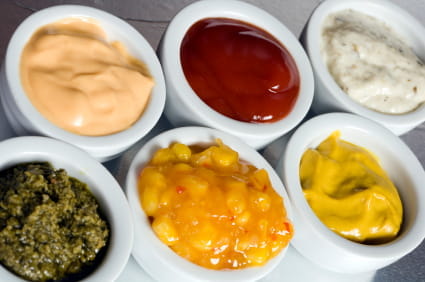
Beware of hidden calories and inflammation-causing ingredients in condiments and dressings. You can read my
article here on my vote for the top 5 picks for healthiest condiments as well as the worst.
Most people don't realize just how many calories and metabolism
damaging high fructose corn syrup they are ingesting in things like
ketchup, salad dressings, cocktail sauce, marinades, etc. For example, 1
Tbsp of ketchup has 5 grams of sugar (usually from HFCS), but the
average person uses 2-4 Tbsp of ketchup with a typical burger and fries
meal. That's anywhere from 10-20 grams of EXTRA sugar just from the
ketchup alone, and not even counting the sweetened drink that most
people have with the meal too.
Be a label reader and avoid HFCS! And despite deceptive
advertisements out there from the corn refining industry that claim
"HFCS is no worse than sugar and is natural", this is far from the truth
as you can read in
this article that shows why HFCS is indeed worse than plain sugar, despite them both being terrible for you.
Food Rule #6.

Speaking
of sugar, most people don't realize that they are addicted to sugar,
and just how bad sugar is for your body internally. I hear people say
things all the time when eating candy or drinking a sweetened drink that
"oh, it's just sugar, I can burn it off easy". Oh, if it were only
that simple. You can
read the article (and video) here about why sugar is actually TOXIC in your body.
That's right... not only does sugar make you fat, it's one of the
direct causes of diabetes, heart disease, as well as feeding cancer
cells. Avoid sugar as much as possible with the exception of a small
amount of natural sugars in a piece of daily fruit.
Food Rule #7.
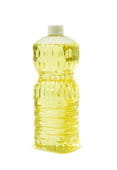
Avoid
canola oil as much as possible... despite the false marketing claims
that canola oil is "healthy" and contains lots of monounsaturated fats
just like olive oil, canola oil is NOTHING like olive oil from a
biochemical standpoint and how it reacts internally in your body. Read
this article for the full story on why to AVOID canola oil at all costs. Note that most canola oil is genetically modified too, so yet another reason to avoid it.
Food Rule #8.
In addition to avoiding canola oil, I highly recommend avoiding
soybean oil, corn oil, or cottonseed oil as much as possible too. These
oils are highly inflammatory in your body, disrupt your omega-3 to
omega-6 fatty acid balance in your body, and also are typically made of
genetically modified crops, of which the long term health consequences
are not yet fully understood by scientists.
This article
here details everything you need to know about which cooking oils to fully avoid and which oils are healthy for you.
You might be surprised to see why fats you falsely thought were
unhealthy such as butter, lard, and coconut oil are actually the
healthiest fats/oils to cook with.
Food Rule #9.
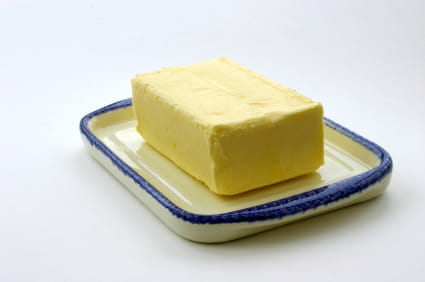
Butter
vs margarine? I have no idea why anybody is still debating this... I
use grass-fed butter on a daily basis, but I would NEVER even touch
margarine... not even the so-called "healthy" margarines, which usually
still contain inflammatory soybean or corn oils. REAL butter is the
only answer in this case. You can read my article
here with more details about why real butter can actually HELP you to get lean.
Food Rule #10.
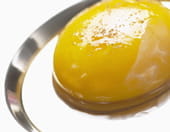
Egg
whites vs whole eggs? Once again, I have no idea why anyone is still
debating this. Most of the general population has still not gotten the
memo that egg yolks are actually the healthiest part of the egg, with
over 90% of the micronutrients and antioxidants, and 100% of the fat
soluble vitamins that are so important for our health. Why anybody
would only eat egg whites and avoid yolks is beyond comprehension. And
no, the dietary cholesterol is eggs is not bad for your heart... in
fact, it increases your good HDL cholesterol. I have a full
article here on why whole eggs are much healthier than egg whites,
help increase your fat burning hormones, and why I personally eat 3-4
whole eggs per day and how this helps to stay in single digit body fat
range.
Food Rule #11.
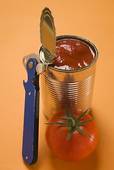
Beware of the carcinogenic and estrogenic chemical
BPA
that is commonly found in some canned foods and bottled drinks. BPA has
been linked to increased abdominal fat, birth defects, cancer, and
more. Remember that canned tomatoes are one of the worst offenders with
highest concentrations of harmful BPA because of the acidic leaching
effect of the tomatoes. You can
read all about BPA and canned foods and bottled drinks here to learn the best ways to avoid this harmful chemical.
Food Rule #12.
In my opinion, it's best to AVOID microwaved foods. Some scientists
believe that microwaving food changes the the biochemistry of the food
in ways that cause negative effects in the body compared to raw or
conventionally cooked food. Think of this from a logical perspective...
the human digestive system evolved over a period of approximately 2
million years (our ancesters homo erectus & neanderthal, as well as
current homo sapiens) eating a combination of raw and cooked food that
was cooked with either fire or hot water, not microwaves.
Microwaves are a new invention which cooks food in an entirely
different way than hot water or fire, creating damaged molecules in food
that were not found in nature previously, and that our body does not
know how to deal with. Logically, it's easy to understand how this
could have health consequences. Read this
article here for a full description of why I never eat microwaved foods anymore
and have not for at least the last 6-7 years. We also show you how
easy it is to live without a microwave and heat up your foods in
healthier ways.
Food Rule #13.

One
of the healthiest things to include in your daily diet are herbs and
spices. In fact, herbs and spices typically contain LOADS more
antioxidants than most fruits and vegetables. Spices are extremely
powerful, and almost medicinal for your body. Turmeric has been shown
to have protective effects against cancer. Cinnamon has powerful blood
sugar controlling effects. Many spices boost your immune system. Read
this
article to see our top 10 votes for the most powerful spices that boost your metabolism and protect your body from degenerative disease.
Bottom line...spices rule! Use them generously in all of your cooking for the best health benefits.
Food Rule #14.
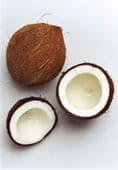
Remember
that despite all of the bad nutrition information you hear from the
government and the media, saturated fats have been falsely villified in
the past, and are much healthier for you than most people realize. In
fact, in recent years, scientists have become a lot more clear that
saturated fats are actually important for health and hormone balance,
your cell membranes, and many other vital functions in your body. You
can read my
article here about why saturated fats aren't so bad after all, and can even be healthy sometimes depending on source.
If you're interested in more of the actual science about why
saturated fat can be healthy for you, I have an article below written by
a PhD in Nutritional Biochemistry called
The Truth about Saturated Fat -
it's a must read if you want to understand the science about why
saturated fats have been falsely villified and how to enjoy these foods
that have always been part of the ancestral human diet.
Food Rule #15.
Always avoid artificial sweeteners! Just because they don't contain
calories doesn't mean they don't harm your body. In fact, many studies
link artificial sweetener use to weight gain. New research is also
showing that artificial sweeteners can "trick" your body into releasing
insulin due to cells in your mouth and stomach that sense the sweetness
and are expecting sugar. Remember that high insulin levels can cause
body fat deposition. Also, triggering insulin in this way can cause more
cravings for carbohydrates and sugar in the hours after eating or
drinking the artificially sweetened product.
You can read my
article here with more details about why artificial sweeteners are terrible for your health, including possible long term health consequences such as cancer.
Food Rule #16.

Pay attention to your Vitamin D levels.
Vitamin D is one of the most important substances in your body. It's
one of the single most important things in your body that control your
hormones as well as your immune system. If you get sick often or
have hormone imbalances, it's quite likely that the cause is linked to
low vitamin D levels.
Unfortunately, it's estimated that almost 90% of Americans are
deficient in vitamin D. Get your blood levels of vitamin D tested.
Your goal should be blood levels between 50-70 ng/ml, where hormonal
balance and immune function seems to be maximized. Sadly, most people
typically clock in with levels in the 20's or 30's or lower, and these
sub par levels can cause a lot of health problems.
Mid day sunshine is the most important source of vitamin D as your
body produces vitamin D from a reaction with oils in your skin and UVB
rays from the sun. Fatty fish, egg yolks, and organ meats are the best
sources of dietary vitamin D, but it is hard to get enough vitamin D
from diet alone, so small doses of daily mid-day sun is also important
for your health (without burning).
You can read my
article here to see why our food supply has diminished vitamin D levels now compared to decades ago.
For lots more great info on vitamin D, and it's powerful benefits to your body, you can also read a really
interesting article here that shows why vitamin D can even make you the equivalent of 5 years YOUNGER!
Food Rule #17.
Probiotics rock!
Along with vitamin D levels, this is one of the single most important
things you can do for your health. Your "microbiome" in your gut is
made up of TRILLIONS of microbes in total and hundreds of types of these
friendly probiotics. These serve so many more vitally important
functions in your body than most people realize.
Probiotics are equally important to your immune system as your
vitamin D levels. Probiotics are your first line of defense in keeping
pathogens at bay and preventing sickness. They're extremely important
for your digestion too.
Read
this article to see how probiotics can improve your digestion and immunity as well as the best sources to build up your healthy colonies in your digestive system.
Food Rule #18.

Beware
of carcinogenic acrylamides in browned carb-based foods. This is yet
another reason to minimize grains as much as possible as breads and
cereals are some of the worst offenders with acrylamides. Read our full
article here on acrylamides, everything you need to know, and how to counteract these chemicals to protect your health.
Food Rule #19.

Avoid
the unknown health consequences of eating genetically modified foods.
Again, going back to the principle that we are most adapted to eating
what our ancesters ate for almost 2 million years, that list of foods
obviously did NOT include genetically modified foods, since these
"frankenfoods" weren't included in the human food supply until the
1990's.
There are still no long term health studies proving that GM foods are safe to eat. Read
this article to see the possible dangers of eating GM foods and which 4 foods are the worst offenders to look out for.
Food Rule #20.
Lastly, enjoy your food! And enjoy good company with food. Don't
just mindlessly eat food in front of the TV. Studies show that people
unknowingly eat more calories and gain more weight when they mindlessly
eat in front of the TV. Instead, focus on your meal instead of a
distraction...savor each bite you have. Pay attention and enjoy the
subtle flavors and aroma of each bite. This makes you enjoy your food
more, while eating less calories.
 In
several other articles, I've told you about some of the really cool
experiments that Tim Ferriss has done in his new book that I read
recently, The 4-Hour Body, and I wanted to show you this one today, because it's pretty cool, and also a simple thing to do...
In
several other articles, I've told you about some of the really cool
experiments that Tim Ferriss has done in his new book that I read
recently, The 4-Hour Body, and I wanted to show you this one today, because it's pretty cool, and also a simple thing to do...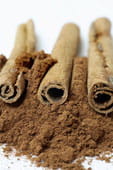 The pre-meal cinnamon
The pre-meal cinnamon by
by 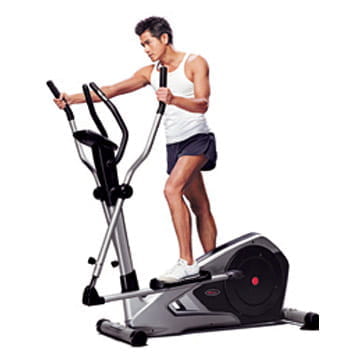
 1. Onions = Amazing Superfood... Eat onions daily if possible.
1. Onions = Amazing Superfood... Eat onions daily if possible. Tip #3. Example of the Glycemic Index (GI) being fairly useless
Tip #3. Example of the Glycemic Index (GI) being fairly useless Did
you know that once you hit 40 years of age, whether you're a man or a
women, your body starts aging FASTER than normal? Studies have shown
that without the proper nutrients and exercise, your body will age about
6 months EXTRA for every year that passes. Think about that! If you
are 40, that means by the time you hit 44 you will LOOK and FEEL 48. And
by the time you reach 60, you will LOOK and FEEL 70 YEARS OLD! We see
this every day... just look around you.
Did
you know that once you hit 40 years of age, whether you're a man or a
women, your body starts aging FASTER than normal? Studies have shown
that without the proper nutrients and exercise, your body will age about
6 months EXTRA for every year that passes. Think about that! If you
are 40, that means by the time you hit 44 you will LOOK and FEEL 48. And
by the time you reach 60, you will LOOK and FEEL 70 YEARS OLD! We see
this every day... just look around you. Low fat everything
has been the craze now for decades and look around. What has that
wonderful bit of advice done for the bodies you see? We're fatter,
sicker, and more addicted to sugar and carbs than any other time in
history. And, we're passing these habits to our kids.
Low fat everything
has been the craze now for decades and look around. What has that
wonderful bit of advice done for the bodies you see? We're fatter,
sicker, and more addicted to sugar and carbs than any other time in
history. And, we're passing these habits to our kids.
 Spinning classes can be fun, if you like sitting in one place and torturing yourself. But have you noticed how little people change
their bodies in these classes? Sure, it's good "cardio", but
cardiovascular conditioning can be gained with far less time and effort.
Spinning classes can be fun, if you like sitting in one place and torturing yourself. But have you noticed how little people change
their bodies in these classes? Sure, it's good "cardio", but
cardiovascular conditioning can be gained with far less time and effort.
 The guys to the left are not fat because they are old—they're fat because they eat, think, and move like a fat, old, dying person!
Becky and I are both in our 50s—older than the guys in this photo—and I
still sport a nice six-pack, and Becky transformed her body from the
typical "middle age mom" to a slim, toned, and super-sexy woman who
looks 10 years younger. (See the next page for photos!)
The guys to the left are not fat because they are old—they're fat because they eat, think, and move like a fat, old, dying person!
Becky and I are both in our 50s—older than the guys in this photo—and I
still sport a nice six-pack, and Becky transformed her body from the
typical "middle age mom" to a slim, toned, and super-sexy woman who
looks 10 years younger. (See the next page for photos!)
 Water isn't just "good for you" — water burns fat. Water suppresses hunger.
Water renews your skin. Just drinking 12 ounces of pure water every day
can take a few years off your face in a matter of weeks. You'll also
drop fat, have more energy, and save your kidneys and liver from chronic
overwork.
Water isn't just "good for you" — water burns fat. Water suppresses hunger.
Water renews your skin. Just drinking 12 ounces of pure water every day
can take a few years off your face in a matter of weeks. You'll also
drop fat, have more energy, and save your kidneys and liver from chronic
overwork. If
you don't work out at all, you're going to lose muscle tissue every
year. That means you'll get fatter and flabbier each and every year with
less shape and more sag. Is this what you desire? No way, right?
If
you don't work out at all, you're going to lose muscle tissue every
year. That means you'll get fatter and flabbier each and every year with
less shape and more sag. Is this what you desire? No way, right?
 Carbohydrates
don't need to be eliminated... they are not inherently "bad" in
reasonable quantities. But grains and processed sugars in particular
should be minimized. So to make things simple, you will be leaner and
healthier if you get most of your carbohydrates from
Carbohydrates
don't need to be eliminated... they are not inherently "bad" in
reasonable quantities. But grains and processed sugars in particular
should be minimized. So to make things simple, you will be leaner and
healthier if you get most of your carbohydrates from  Focus
on quality protein sources such as wild game, wish fish and seafood,
grass-fed meats, and free-roaming organically fed eggs, while trying to
avoid most farmed meats and farmed fish that were fed mostly grains and
kept in unhealthy "factory farm" environments. You can read my
Focus
on quality protein sources such as wild game, wish fish and seafood,
grass-fed meats, and free-roaming organically fed eggs, while trying to
avoid most farmed meats and farmed fish that were fed mostly grains and
kept in unhealthy "factory farm" environments. You can read my  Aside
from processed sugar, if I had to pick 3 of the WORST foods in the
average western diet that would be most important to start avoiding, it
would be corn, soy, and wheat, and their derivatives such as corn syrup,
corn oil, soybean oil, soy protein, etc. Do you want to hear an
appalling statistic about what the average person eats... Currently, the
average adult eating a typical modern western diet in countries such as
the US, Canada, Australia, etc consumes approximately 67% of their total caloric intake from only 3 foods -- CORN, SOY, AND WHEAT (and their derivatives).
Aside
from processed sugar, if I had to pick 3 of the WORST foods in the
average western diet that would be most important to start avoiding, it
would be corn, soy, and wheat, and their derivatives such as corn syrup,
corn oil, soybean oil, soy protein, etc. Do you want to hear an
appalling statistic about what the average person eats... Currently, the
average adult eating a typical modern western diet in countries such as
the US, Canada, Australia, etc consumes approximately 67% of their total caloric intake from only 3 foods -- CORN, SOY, AND WHEAT (and their derivatives). Beware of hidden calories and inflammation-causing ingredients in condiments and dressings. You can read my
Beware of hidden calories and inflammation-causing ingredients in condiments and dressings. You can read my  Speaking
of sugar, most people don't realize that they are addicted to sugar,
and just how bad sugar is for your body internally. I hear people say
things all the time when eating candy or drinking a sweetened drink that
"oh, it's just sugar, I can burn it off easy". Oh, if it were only
that simple. You can
Speaking
of sugar, most people don't realize that they are addicted to sugar,
and just how bad sugar is for your body internally. I hear people say
things all the time when eating candy or drinking a sweetened drink that
"oh, it's just sugar, I can burn it off easy". Oh, if it were only
that simple. You can  Avoid
canola oil as much as possible... despite the false marketing claims
that canola oil is "healthy" and contains lots of monounsaturated fats
just like olive oil, canola oil is NOTHING like olive oil from a
biochemical standpoint and how it reacts internally in your body. Read
Avoid
canola oil as much as possible... despite the false marketing claims
that canola oil is "healthy" and contains lots of monounsaturated fats
just like olive oil, canola oil is NOTHING like olive oil from a
biochemical standpoint and how it reacts internally in your body. Read  Butter
vs margarine? I have no idea why anybody is still debating this... I
use grass-fed butter on a daily basis, but I would NEVER even touch
margarine... not even the so-called "healthy" margarines, which usually
still contain inflammatory soybean or corn oils. REAL butter is the
only answer in this case. You can read my article
Butter
vs margarine? I have no idea why anybody is still debating this... I
use grass-fed butter on a daily basis, but I would NEVER even touch
margarine... not even the so-called "healthy" margarines, which usually
still contain inflammatory soybean or corn oils. REAL butter is the
only answer in this case. You can read my article  Egg
whites vs whole eggs? Once again, I have no idea why anyone is still
debating this. Most of the general population has still not gotten the
memo that egg yolks are actually the healthiest part of the egg, with
over 90% of the micronutrients and antioxidants, and 100% of the fat
soluble vitamins that are so important for our health. Why anybody
would only eat egg whites and avoid yolks is beyond comprehension. And
no, the dietary cholesterol is eggs is not bad for your heart... in
fact, it increases your good HDL cholesterol. I have a full
Egg
whites vs whole eggs? Once again, I have no idea why anyone is still
debating this. Most of the general population has still not gotten the
memo that egg yolks are actually the healthiest part of the egg, with
over 90% of the micronutrients and antioxidants, and 100% of the fat
soluble vitamins that are so important for our health. Why anybody
would only eat egg whites and avoid yolks is beyond comprehension. And
no, the dietary cholesterol is eggs is not bad for your heart... in
fact, it increases your good HDL cholesterol. I have a full  Beware of the carcinogenic and estrogenic chemical BPA
that is commonly found in some canned foods and bottled drinks. BPA has
been linked to increased abdominal fat, birth defects, cancer, and
more. Remember that canned tomatoes are one of the worst offenders with
highest concentrations of harmful BPA because of the acidic leaching
effect of the tomatoes. You can
Beware of the carcinogenic and estrogenic chemical BPA
that is commonly found in some canned foods and bottled drinks. BPA has
been linked to increased abdominal fat, birth defects, cancer, and
more. Remember that canned tomatoes are one of the worst offenders with
highest concentrations of harmful BPA because of the acidic leaching
effect of the tomatoes. You can  One
of the healthiest things to include in your daily diet are herbs and
spices. In fact, herbs and spices typically contain LOADS more
antioxidants than most fruits and vegetables. Spices are extremely
powerful, and almost medicinal for your body. Turmeric has been shown
to have protective effects against cancer. Cinnamon has powerful blood
sugar controlling effects. Many spices boost your immune system. Read
this
One
of the healthiest things to include in your daily diet are herbs and
spices. In fact, herbs and spices typically contain LOADS more
antioxidants than most fruits and vegetables. Spices are extremely
powerful, and almost medicinal for your body. Turmeric has been shown
to have protective effects against cancer. Cinnamon has powerful blood
sugar controlling effects. Many spices boost your immune system. Read
this  Remember
that despite all of the bad nutrition information you hear from the
government and the media, saturated fats have been falsely villified in
the past, and are much healthier for you than most people realize. In
fact, in recent years, scientists have become a lot more clear that
saturated fats are actually important for health and hormone balance,
your cell membranes, and many other vital functions in your body. You
can read my
Remember
that despite all of the bad nutrition information you hear from the
government and the media, saturated fats have been falsely villified in
the past, and are much healthier for you than most people realize. In
fact, in recent years, scientists have become a lot more clear that
saturated fats are actually important for health and hormone balance,
your cell membranes, and many other vital functions in your body. You
can read my  Pay attention to your Vitamin D levels.
Pay attention to your Vitamin D levels. Beware
of carcinogenic acrylamides in browned carb-based foods. This is yet
another reason to minimize grains as much as possible as breads and
cereals are some of the worst offenders with acrylamides. Read our full
Beware
of carcinogenic acrylamides in browned carb-based foods. This is yet
another reason to minimize grains as much as possible as breads and
cereals are some of the worst offenders with acrylamides. Read our full
 Avoid
the unknown health consequences of eating genetically modified foods.
Again, going back to the principle that we are most adapted to eating
what our ancesters ate for almost 2 million years, that list of foods
obviously did NOT include genetically modified foods, since these
"frankenfoods" weren't included in the human food supply until the
1990's.
Avoid
the unknown health consequences of eating genetically modified foods.
Again, going back to the principle that we are most adapted to eating
what our ancesters ate for almost 2 million years, that list of foods
obviously did NOT include genetically modified foods, since these
"frankenfoods" weren't included in the human food supply until the
1990's.